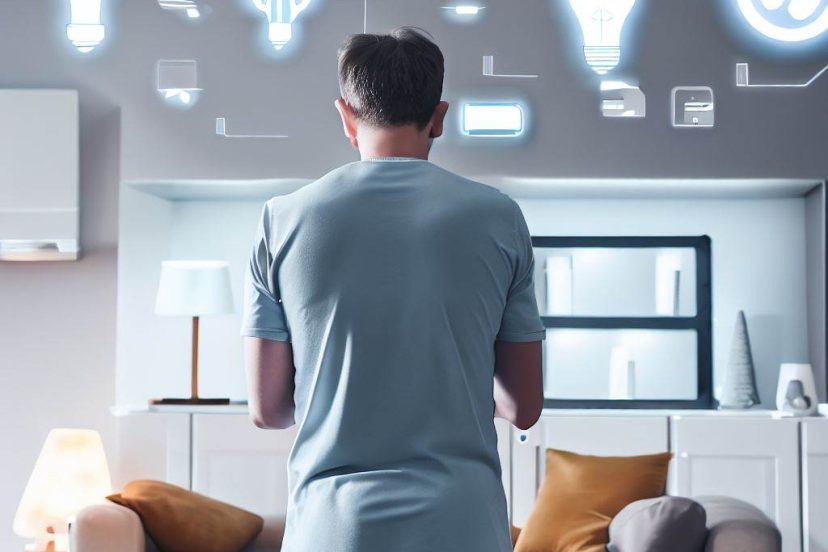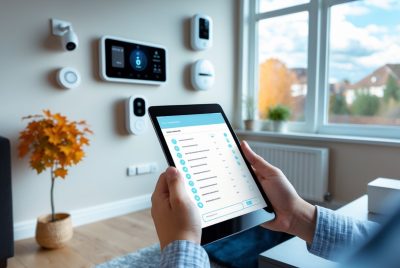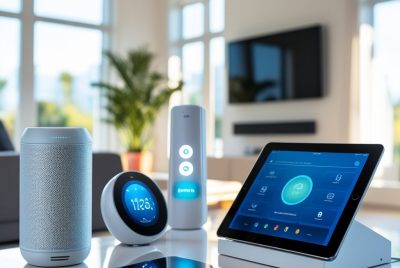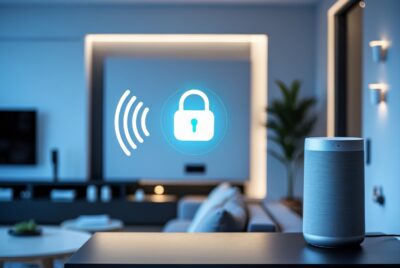Smart Home Frequent Issues – Full Guide
*We may earn a commission for purchases made using our links. Please see our disclosure to learn more.
Smart Home Frequent Issues: Troubleshooting Common Problems
Smart home technology is revolutionizing how I interact with my living space but what are some Smart Home Frequent Issues that make it not so convenient? As a tech enthusiast, I’ve observed firsthand the ways smart home systems integrate seamlessly into daily lives, making tasks easier and saving time. This investment in technology allows for a centralized control over various smart devices, such as lighting, thermostats, security cameras, and more, all orchestrated with the touch of a button or a simple voice command.

However, while the benefits are substantial, these advanced systems are not without their challenges. I’ve encountered several common issues that can disrupt the smooth operation of a smart home. These problems range from connectivity issues that prevent smart devices from communicating with each other to the frustration caused by inconsistent voice assistant performance. As these technologies become more pervasive in our homes, understanding how to troubleshoot and overcome these obstacles is crucial in maintaining the reliability and efficiency of our smart home investments.
Setting Up Your Smart Home

As I navigate the process of setting up a smart home, there are critical steps that demand my attention: the selection of appropriate devices, their installation and configuration, and the assurance of device compatibility.
Choosing the Right Devices
In choosing smart devices for my home, I focus on their long-term viability and how they will fit into my daily routine. I consider factors such as:
- Power Source: Devices that run on batteries might need frequent replacements, so I opt for direct power sources when possible.
- Communication Protocols: I ensure that the devices utilize standard protocols like Zigbee or Z-Wave for greater interoperability.
- Voice Assistant Integration: I check for compatibility with popular voice assistants like Amazon Alexa or Google Assistant for hands-free control.
By paying attention to these specifics, my goal is to select smart devices that are efficient and integrate well into a centralized system.
Installing and Configuring Your Devices
When installing smart devices, I follow a structured approach:
- Central Hub Setup: I start by setting up the central hub or smart home hub since it serves as the command center for all other devices.
- Network Considerations: A stable Wi-Fi connection is crucial. I verify my router’s configuration and, if needed, set up a dedicated network for my smart devices.
- Professional Installation: For complex systems, I consider professional installation to ensure optimal performance and avoid common pitfalls.
Proper installation and configuration are vital to ensure that my smart home operates smoothly from the start.
Ensuring Device Compatibility
I tackle compatibility issues by:
- Sequential Device Connection: When adding new devices, I do it one at a time to monitor how each affects the overall system.
- Compatibility Checks: I verify that each device is compatible with my smart home hub and other devices.
- Choosing Cloud-Free Devices: Where possible, I choose devices that are not overly reliant on cloud services, which can be a point of failure during outages.
By ensuring compatibility between devices, voice assistants, and the central hub, I increase the reliability and efficiency of my smart home ecosystem. Being methodical about these considerations helps me avoid common compatibility issues that can arise later on.
Connectivity and Network Issues

In managing smart homes, recognizing and rectifying connectivity and network issues is central to maintaining seamless operation. Often, these hitches stem from Wi-Fi connectivity troubles, suboptimal router configurations, and environmental factors like power outages and interference.
Resolving Wi-Fi Connectivity Problems
When I face Wi-Fi connectivity problems, my first step is to check the signal strength on various devices. If the signal is weak or unstable, I ensure that I’m not overwhelming the router with too many connected devices. Wi-Fi operates best when there is a balanced load. Router placement is also critical; I aim to keep it central and away from obstructions or electronics that might cause interference.
Router and Wi-Fi Configuration
To optimize router settings for smart home devices, I verify that it’s using a frequency band suitable for smart homes, such as the less crowded 5 GHz over 2.4 GHz when available. For older devices that might not support newer Wi-Fi standards, ensuring backward compatibility is a must. In cases where range is an issue, installing a Wi-Fi range extender or adopting a mesh Wi-Fi system can greatly improve coverage throughout the home.
Dealing with Power Outages and Interference
I anticipate power outages by incorporating uninterruptible power supplies (UPS) for key networking equipment. This ensures that my connectivity is not immediately lost during an outage. Moreover, to address interference, which can come from household appliances or neighboring Wi-Fi networks, I change the Wi-Fi channel to a less congested one after scanning the environment with a Wi-Fi analyzer tool.
Security and Privacy

In this section, I’ll guide you through securing your smart home, clarify why privacy is paramount, and provide strategies to defend against digital intrusions. As smart homes integrate deeper into our lives, understanding and implementing security and privacy measures is crucial to protect against unauthorized access and misuse of personal data.
Protecting Your Smart Home
To safeguard my smart home, I start by ensuring all devices are updated with the latest firmware, which often includes patches for security vulnerabilities. Strong, unique passwords are essential; I avoid using default passwords that come with the devices. It’s also wise to regularly change these passwords. For a more fortified network, I implement a firewall to monitor incoming and outgoing traffic and to block unauthorized attempts to connect to my smart devices.
Device Permissions:
- Cameras: Limit access to live feeds and stored recordings.
- Smart Speakers: Restrict audio recording triggers and storage.
Understanding Privacy Concerns
Privacy issues in smart homes stem from the vast amounts of user data collected by devices, including audio/video recordings and other sensitive personal information. I am careful about what information my smart devices have access to, and I closely monitor their device permissions to ensure they only have what they need to function. Transparency from manufacturers about data usage is something I always look for before adding a new device to my network.
- Routinely audit device access to personal data.
- Disable unnecessary data collection features.
Mitigating Hacking and Cyberattacks
The threat of hacking and cyberattacks keeps me vigilant. I mitigate risks by using security measures such as enabling two-factor authentication on devices that support it and deterring unauthorized access. Encrypting my Wi-Fi network adds an extra layer of protection, making it more difficult for hackers to intercept the data transmitted between my smart devices. Staying informed about the latest security threats enables me to act swiftly in tightening my home’s digital security whenever necessary.
Cyberattack Prevention:
- Regularly updating security software.
- Educating myself about phishing and other common hacking techniques.
Smart Home Frequent Issues: Troubleshooting Common Issues

In my experience with smart homes, addressing issues effectively requires a blend of regular maintenance and prompt action to mitigate malfunctions and update glitches.
Managing Software and Firmware Updates
Firmware and software updates are pivotal for the smooth operation of smart devices. I ensure that all my devices are set to automatically update if possible. However, it’s not uncommon for a manual check to be needed.
- Check for Updates:
- Navigate to the device settings.
- Look for ‘Update’ or ‘About’ sections.
- Follow prompts to install new updates.
- Scheduled Maintenance:
- Set reminders to periodically check devices that don’t update automatically.
Dealing with updates can prevent issues stemming from outdated software which often leads to security vulnerabilities or malfunctioning hardware.
Addressing Hardware Malfunctions
When it comes to malfunctioning hardware, I perform a series of troubleshooting steps to diagnose the problems. Here’s a quick guide:
- Reboot the Device: Unplug the device for 60 seconds and then plug it back in.
- Check Connections: Ensure all cables and power sources are properly connected.
- Battery-Powered Devices: Replace batteries if devices are not functioning as expected.
If these steps don’t resolve the issue, contacting customer support or seeking the help of a professional may be the next course of action.
Optimizing Voice Command Detection
Voice command detection can be flaky due to background noise or non-standard accents. I usually take the following measures to enhance voice recognition:
- Reduce Background Noise: Position the device away from loud appliances.
- Speak Clearly: Use distinct pronunciation and maintain a consistent volume level.
- Voice Training: Use any voice training features to help the system better understand my accent and speech patterns.
Maintaining a direct line of sight to the microphone can dramatically improve its ability to pick up commands accurately.
Maintenance and Support with Smart Home Frequent Issues

In my experience, ensuring the longevity and reliability of a smart home system is contingent upon regular system maintenance and clear understanding of support options. For smooth operation, I not only implement routine checks but also stay informed about warranty and customer support avenues.
Conducting Regular System Maintenance
To prevent frequent issues such as battery drain or power supply complications, I prioritize scheduled maintenance. Regular system updates are crucial for both security and functionality enhancements, and I make it a habit to check for firmware updates from device manufacturers.
- Battery Checks: I routinely check the status of UPS systems and replace batteries before they fail.
- Power Supply Inspection: I verify if all devices have a stable power supply to avoid unexpected outages.
When I encounter problems, sometimes a power cycle—turning the device off and then on again—can resolve minor connectivity issues. It’s practical and often effective.
Accessing Customer Support and Warranty Information
Understanding my devices’ warranty and support policies ensures I can access help when needed. Here’s how I manage support information:
- Record Keeping: I maintain a record of warranty periods for my devices to ensure service is claimed in a timely fashion.
- Customer Support: I familiarize myself with support channels, be it online support, phone numbers, or live chats, for efficient communication in case of issues.
My proactive approach to maintenance and support minimizes downtime and maintains the efficacy of my smart home ecosystem.
Frequently Asked Questions about Smart Home Frequent Issues
In this section, I address some of the most common queries regarding smart home device issues and offer succinct guidance on resolving them.
1. How can I troubleshoot connectivity issues with my smart home devices?
Smart home devices rely heavily on stable Wi-Fi connections. If I experience connectivity issues, I first check the strength of my Wi-Fi signal and ensure the device is within range of my router. It may also be necessary to restart the router or the smart device itself to refresh the connection.
2. What should I do when a smart device is not responding to voice commands?
When a smart device isn’t responding to voice commands, I verify the microphone’s functionality and confirm that the device’s voice recognition feature is correctly configured. I also check whether the device’s firmware and the voice assistant app are up to date.
3. How do I ensure the security of my smart home system against hackers?
To secure my smart home system from unauthorized access, I make sure to use strong, unique passwords for my Wi-Fi network and all connected apps. I also regularly update device firmware and use a secure encryption method, like WPA2, for my home network.
4. What are common compatibility problems between different smart home products?
To avoid compatibility issues between my different smart home products, I check if the devices share the same communication protocols, such as Zigbee or Z-Wave, before purchasing. It is also important to determine whether they are compatible with the same smart home ecosystems like Amazon Alexa or Google Home.
5. Why am I experiencing lag or delays in smart home device automation?
Lag or delays can be attributed to overloaded networks or the processing capacities of the smart home hub. To minimize automation delays, I ensure that my network is optimized for speed, and I schedule regular reboots of my smart home hub to keep it running efficiently.




